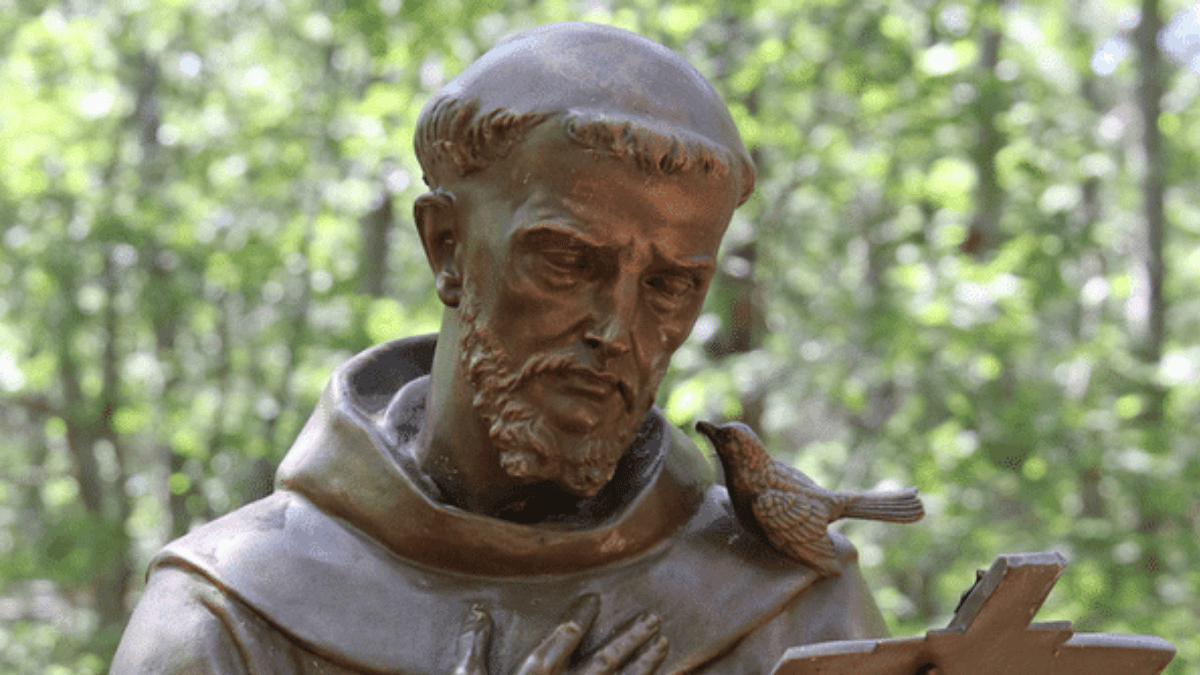Up to now...
St. Francis of Assisi
Day 30 of the journey, we have covered a lot! So perhaps we might take a quick look back at all that has happened “up to now…”

Some of the early key events in Francis’ life occurred between 1202 and 1209. Before this period he was a bit of a prodigal son freely spending family money on entertainment and fun. His military adventures in 1202 lead to a profound crisis in his life that in time led him to become the person and saint we know best in story and legend. It is in the year 1209 that history records Francis founding the religious movement that came to bear his own name: the Franciscans.
From 1209 to 1217 the followers of Francis were largely based in the Assisi and Reiti Valley area. In 1217 the first missions were sent across the Mediterranean and Northern European countries. Francis also eventually left on mission and joined the 5th Crusade leaving other brothers in charge of the others. The carnage of war, his encounter with the Sultan of Egypt, Al-Malik al-Kamil, and the subsequent travels through Palestine, Syria, and the Levant took its toll spiritually, mentally, and physically. He returned with illness that would burden him the remainder of his life.
Francis’ absence had brought the friars to a liminal moment in the growth of the fraternity; betwixt-and-between the times when all knew Francis and could learn by his example to a time when most friars had never met Francis, especially the friars in Spain, France, the British Isles, and among the Germanic tribes. By many estimates, the fraternity was in need of better leadership.
The friars were being pulled and pushed in many directions. Some friars wanted a more structured life such as the monastics, and yet still wanted their degrees of freedom. Other friars only wanted to live in hermitages and beg for food. Still others were moving to the new cities and serving the growing population of homeless and beggars. Meanwhile the Pope and Curia were hinting that the friars should become priests in order to serve the cities – even as more men, already ordained, were joining the friars, and thus leaving the dioceses and monasteries. The complaints from bishops and abbots were mounting up as the friars wandered through the diocesan areas preaching and holding penance services apart from the local priests and bishops – and in many cases, collecting wills and benefices.
In his absence, the fraternity continued in the same direction, but vestiges of order and organization began to appear – and they were much needed at this juncture of development of the Franciscan movement. Francis returned to face the reality that religious life and living in community would ever cast him in the role of authority and superior – not something he sought nor desired, nor seemed to possess the willingness to do. Giving the brothers rules or structures to follow was not merely difficult for him; it placed him in a position of superiority that was not part of the vision he was following.
In the year 1220, Francis announced his decision to step down as leader/superior of the Order, even as he was still the “spiritual leader” of the fraternity.
Understanding the currents that were leading the fraternity to adopt more formal practices, in late 1220 or early 1221, Francis and some companions undertook the writing of the “early rule” also known as the Rule of 1221. It is a potpourri of spiritual reflections, exhortations, and communal and individual norms of behavior – all animated by extensive citations from Scripture. While it was intended to serve a juridical purpose for Rome; for Francis it was a reminder of the principles of life in minoritas: “The rule and life of these friars is this: to live in obedience, in chastity and without anything of one’s own, and to follow the teaching and the footprints of Our Lord Jesus Christ who said, ‘If you wish to be perfect, go and sell all that you have and give it to the poor, and you will have treasure in heaven; and come and follow me.’” (Early Rule 1:1-2)
The rule was not approved as presented, but undaunted, Francis and the brothers returned in 1223 with a Rule of Life that was approved by the Pope. This “later rule” or “Rule of 1223” is known as the regula bullata because it was formally issued under the Papal Bull (seal) Solet annuere. It conferred on the Franciscans the official status of “Order” as a juridical foundation with the Catholic Church. While the 1223 document is the juridical rule that directs Franciscan life, it is the “Early Rule” of 1221 where today’s Franciscans seek out the spirit of the early Franciscan community.